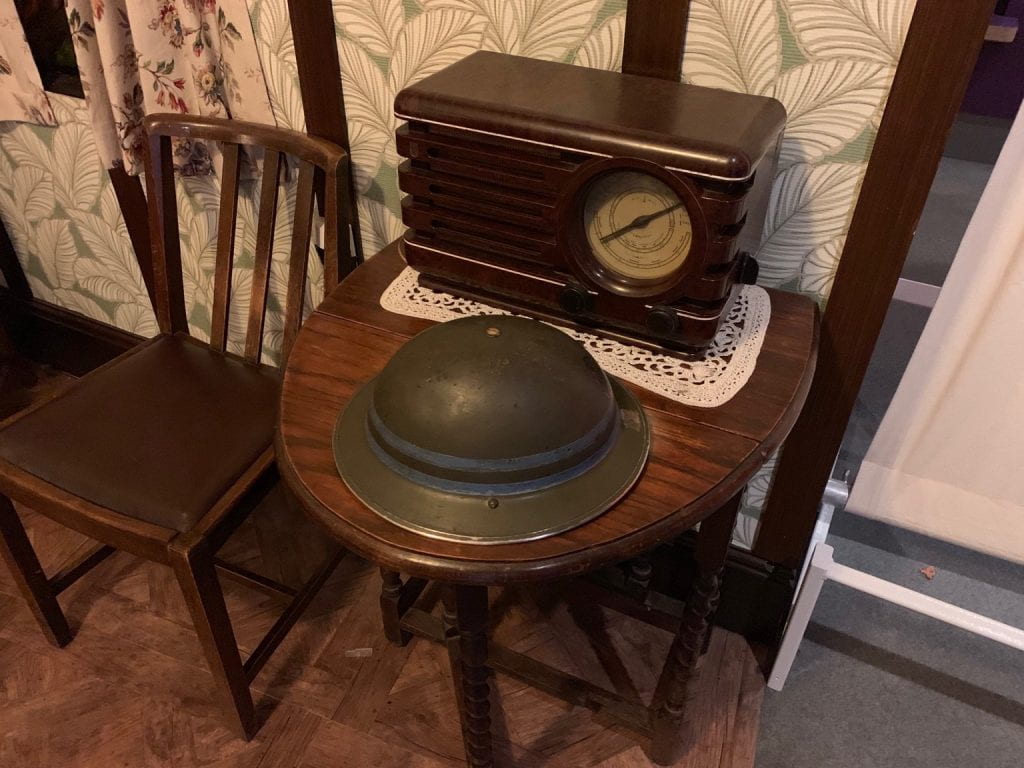
On Saturday, I experienced the thrill of almost missing my morning train from London to Manchester, UK. My destination was the People’s History Museum, a museum presenting the history of working people and democracy in the United Kingdom. I was drawn to the museum during our group’s visit to the Churchill War Rooms, which present the “great man” theory of history. While they were interesting and informative, I found Churchill’s continued, blatant imperialism disturbing. So I began looking for a museum on topics for which I care deeply: labor, workers, and democracy. Having spent a significant amount of time studying the history of working people and workers’ movements in the United States, I was looking for something just like the People’s History Museum.

The People’s History Museum from outside.
Walking up the stairs leading to the museum’s entry exhibit, I grabbed a punch card and “clocked-in” to the museum using a real 19th century punch-card machine as a factory whistle screamed in the background. I walked through the glass doors to an opening room filled with the exhilarating (and all too often, bloody and depressing) history of working people in the UK told through artifacts, propaganda, banners, and interactive exhibits. As I journeyed through slavery on to the industrial revolution and then into the late 19th century, I was struck by how similar the plight of the UK’s workers was to those in the United States.
I walked further, squinting to make out Keir Hardie’s hand-written speech notes as he worked toward the creation of the Labour Party. I saw huge, intricately painted trade union banners. I watched as the Great War initially brightened and then dimmed the dreams of workers. I saw the Great Depression create a groundswell of support for greater social welfare and a more caring government. I saw the rise of the Communist Party and the British Union of Fascists as the world inched ever closer to war. Then, Nazi Germany invaded Poland, Britain declared war, and World War II began.
The British call World War II “The People’s War.” And indeed, all suffered in the fight against fascism. However, the People’s History Museum does not dwell long on the war but rather on what came after. The British suffered immensely during the war—facing continuous bombing, rationing, and loss of life. But as the museum showed, in the decades leading up to the war, the problems plaguing the UK were more deep-rooted. In 1942, the wartime coalition government published the Beveridge Report, a document outlining a future welfare state in Britain. In 1945, Winston Churchill was unceremoniously thrown from government by a landslide Labour victory, bringing to power Clement Attlee, who would implement this welfare state.

A World War II era helmet sits atop a table. The radio next to it plays a BBC broadcast declaring Labour’s landslide victory in 1945.

John Armstrong’s iconic poster design for the 1945 election campaign. He also designed Labour’s manifesto, Let Us Face the Future.
The Labour Government of 1945 made sweeping reforms to British society. This government is best known for its crowning achievement: the National Health Service. This was one of its many great reforms. But the Labour Government of ‘45 also set in motion a strategy for building houses. In a country as heavily bombed as the UK, this was desperately needed. The Labour government’s reforms were so popular, the Conservatives began campaigning on building more houses faster.

A campaign poster urging voters who care about housing to vote Labour.

Literature on the newly created National Health Service, which continues to provide world-class healthcare free at the point of service to everyone in the United Kingdom.
As I left the exhibit halls of the museum, I imagined the creation and implementation of the Government of ‘45’s sweeping reforms. Today, many cannot even fathom creating a single payer system in the United States. It seems that only seeing the experience of wartime—seeing what a nation can do when it wants to—can make some actually envision reform. When I think about the people’s war, I think about not only World War II, but the broader struggle of workers for freedom. Fascism arose in opposition to workers organizing for their rights. If we are truly to see World War II as a people’s war, we must not leave out the broader struggle of workers for freedom and democracy.
























